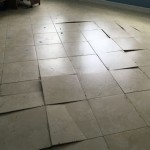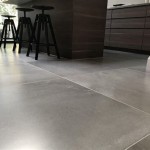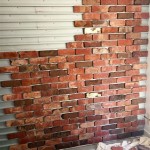Unlock the Potential of Flagstone Tiles for Patios
Flagstone tiles offer a compelling blend of natural beauty and durability, making them a popular choice for creating stunning and functional patios. Their irregular shapes, varied colors, and textured surfaces contribute to a unique aesthetic that complements a range of architectural styles. Understanding the characteristics, benefits, and installation considerations of flagstone tiles is crucial for anyone considering this material for their outdoor living space.
Flagstone, by definition, is a sedimentary rock that is naturally cleaved into thin layers. Common types include sandstone, slate, and quartzite, each possessing distinct properties and visual appeal. The natural variation inherent in flagstone means no two patios will be exactly alike, lending a bespoke quality to the finished project. Beyond aesthetics, flagstone offers practical advantages such as slip resistance, weather resistance, and longevity when properly installed and maintained.
Selecting the right type of flagstone for a patio involves considering factors such as climate, desired aesthetic, budget, and intended use. The thickness of the flagstone is also an important consideration, with thicker stones generally being more durable and suitable for areas with heavy foot traffic or furniture. Color variations should also be taken into account, ensuring the chosen flagstone complements the surrounding landscape and architectural elements of the home.
Aesthetic Versatility and Natural Appeal
The inherent beauty of flagstone lies in its natural variations. The irregular shapes, textures, and color blends found in each piece contribute to a patio with unique character. This contrasts with the uniformity of manufactured paving stones, adding a touch of rustic elegance and organic warmth to outdoor spaces. Different flagstone types offer distinct visual characteristics:
- Sandstone flagstone typically exhibits warm tones ranging from buff and tan to red and brown. Its textured surface provides good slip resistance, making it a practical choice for patios. Sandstone is relatively porous, so sealing is recommended to prevent staining and weathering.
- Slate flagstone is known for its fine-grained texture and naturally layered appearance. Colors range from shades of gray and black to green and purple. Slate is generally less porous than sandstone, making it more resistant to water damage. Its smooth surface can be slippery when wet, so selecting a textured variety is advised for patio applications.
- Quartzite flagstone is a metamorphic rock that offers exceptional durability and resistance to scratching and staining. Its shimmering appearance and wide range of colors, including silver, gold, and gray, add a touch of sophistication to outdoor spaces. Quartzite is relatively non-porous, minimizing the need for frequent sealing.
The ability to mix and match different flagstone types and colors allows for creating custom patio designs that reflect individual preferences. Combining different sizes and shapes can add visual interest and break up the monotony of a uniformly paved surface. The natural colors of flagstone blend seamlessly with surrounding landscaping, creating a harmonious and inviting outdoor environment.
Durability and Long-Term Performance
Flagstone is renowned for its durability and ability to withstand the rigors of outdoor use. Its inherent strength and resistance to weathering make it a long-lasting paving material, capable of withstanding temperature fluctuations, moisture exposure, and heavy foot traffic. When properly installed and maintained, a flagstone patio can provide decades of enjoyment.
The longevity of a flagstone patio is influenced by several factors, including the type of flagstone used, the quality of installation, and the level of maintenance provided. Selecting a durable flagstone type, such as quartzite, is crucial for areas with harsh weather conditions or heavy use. Proper installation, including a well-compacted base and adequate drainage, is essential for preventing settling and cracking. Regular maintenance, such as sweeping, cleaning, and sealing, helps to protect the flagstone from staining and weathering.
The thickness of the flagstone is another important factor to consider. Thicker flagstones, typically ranging from 1.5 to 2 inches, are more resistant to cracking and breakage than thinner flagstones. They are generally recommended for areas with heavy foot traffic or furniture. Thinner flagstones, typically ranging from 1 to 1.5 inches, can be used for walkways or patios with lighter use.
Proper drainage is crucial for the long-term performance of a flagstone patio. Allowing water to accumulate beneath the flagstone can lead to settling, cracking, and the growth of mold and mildew. Installing a well-drained base and ensuring proper grading will help to prevent water damage. Using permeable jointing materials, such as polymeric sand, also allows water to drain through the patio surface.
Installation Considerations and Best Practices
Installing a flagstone patio requires careful planning and attention to detail. A well-executed installation is essential for ensuring the longevity and stability of the patio. While it is possible for experienced DIYers to install a flagstone patio, professional installation is often recommended, especially for larger or more complex projects.
The installation process typically involves several key steps: preparing the base, laying the flagstone, and filling the joints. The base should be excavated to a depth of at least 6 inches and compacted thoroughly. A layer of gravel or crushed stone is then added to provide drainage. A layer of sand or stone dust is spread over the gravel to create a level surface for the flagstone.
When laying the flagstone, it is important to carefully select and arrange the stones to create a visually appealing and structurally sound surface. The irregular shapes of flagstone pieces require careful fitting and placement. Using a rubber mallet to gently tap the stones into place helps to ensure a level and stable surface. A consistent joint width, typically ranging from 1 to 3 inches, should be maintained between the stones.
Filling the joints between the flagstone pieces is crucial for preventing weed growth and maintaining the stability of the patio. Various jointing materials can be used, including polymeric sand, stone dust, and mortar. Polymeric sand is a popular choice due to its ease of installation and ability to resist weed growth. Stone dust provides a natural and rustic look but may require more frequent maintenance. Mortar offers the most durable and long-lasting solution but requires more skill and experience to install properly.
Sealing the flagstone after installation is recommended to protect it from staining and weathering. A high-quality penetrating sealer will help to repel water and oil, making the flagstone easier to clean and maintain. The frequency of sealing will depend on the type of flagstone used and the level of exposure to the elements.
In summary, unlocking the potential of flagstone tiles for patios requires careful consideration of the material's aesthetic qualities, durability, and installation requirements. The natural beauty and long-lasting performance of flagstone make it a compelling choice for creating a stunning and functional outdoor living space. Choosing the right type of flagstone, ensuring proper installation, and providing regular maintenance will help to ensure a flagstone patio provides years of enjoyment.

Flagstone Patio Unique Backyard Ideas And Installation Guide

What Is The Best Outdoor Paving For Patios Blog Quorn Stone

8 Diy Flagstone Patio Ideas Family Handyman

Outdoor Patio Tiles 10 Best Ideas The Family Handyman

Terrace Flooring Expert Tips For Choosing The Best Outdoor

Outdoor Patio Tiles 10 Best Ideas The Family Handyman

8 Diy Flagstone Patio Ideas Family Handyman

How Much Does A Stone Patio Cost 2025 S

Beautify Your Outdoor Space With These Tiles Nitco Blog

10 Stone Patio Ideas Family Handyman
Related Posts








